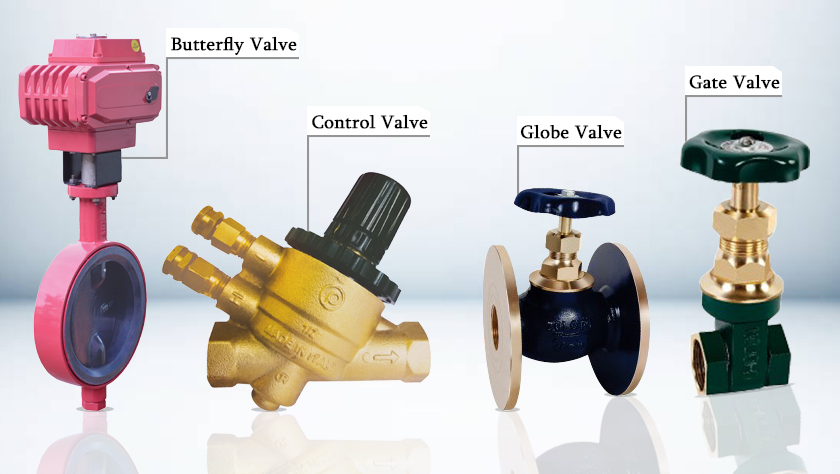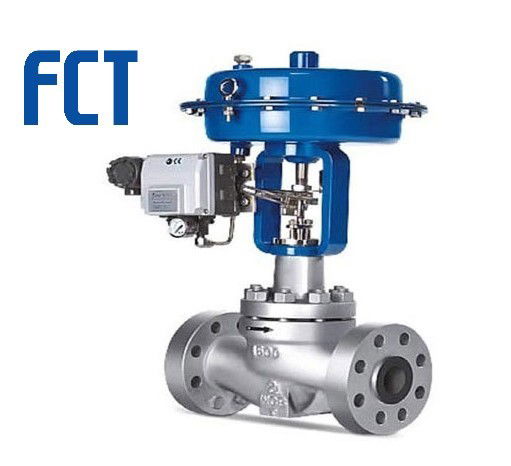Recognizing the Importance of Control Valves in Process Automation

Maximize Power Savings and Convenience With Advanced Building Automation Controls
In the realm of modern architecture and facility administration, the combination of sophisticated building automation manages stands as a crucial advancement. The convergence of modern technology and sustainability has birthed a brand-new age where energy efficiency, convenience optimization, and operational streamlining are no longer possible facts yet distant goals. By utilizing the power of automation, buildings can adjust, react, and evolve in manner ins which were when unthinkable. The possibility for substantial power cost savings and improved comfort is not simply a promise yet a possibility waiting to be met. This standard shift in structure monitoring holds the vital to unlocking a world where ecological conscientiousness and owner wellness harmoniously exist side-by-side within the wall surfaces of our structures.
Energy Effectiveness Advantages
Power efficiency benefits can substantially minimize energy intake and functional prices in structures. Energy-efficient systems, such as innovative building automation controls, can enhance the use of resources like cooling, illumination, and home heating, leading to lower energy expenditures over time.
Additionally, improved energy efficiency can extend the life-span of structure tools and systems. By operating much more effectively, cooling and heating systems, lighting components, and various other structure components experience much less deterioration, resulting in minimized upkeep and replacement prices. Furthermore, energy-efficient structures usually regulate higher residential property values and rental rates, providing long-term monetary benefits to owners.
Moreover, energy effectiveness can boost owner comfort and productivity. Appropriately regulated interior environments with ideal lighting and thermal problems produce an even more pleasurable and conducive workspace, causing improved employee fulfillment and performance. Generally, the power effectiveness advantages linked with sophisticated structure automation controls are multifaceted, including price savings, environmental stewardship, and owner well-being.
Improved Convenience Control
Enhancing comfort control in building atmospheres calls for an innovative combination of sophisticated automation systems for optimum occupant health. By using sophisticated structure automation controls, centers can customize the interior atmosphere to fulfill the specific needs and choices of passengers. These systems allow exact law of lighting, air flow, and temperature level, producing a comfy and effective ambience. Occupant fulfillment and efficiency are carefully linked to thermal convenience, making it necessary to have systems in position that can adapt to transforming problems in real-time.
Boosted comfort control surpasses fundamental temperature changes. It includes features such as personalized settings, occupancy sensing units, and natural light utilization to create a receptive and dynamic setting. By including these sophisticated controls, buildings can not only boost convenience yet likewise boost energy effectiveness by enhancing system operations based on real occupancy and usage patterns. Inevitably, prioritizing passenger comfort with sophisticated automation systems results in a much more pleasurable and much healthier interior environment.
Functional Efficiency Improvements

In addition, the application of real-time surveillance and analytics devices makes it possible for building operators to determine energy inefficiencies and functional abnormalities quickly. By continuously keeping track of power over here usage patterns and system efficiency metrics, modifications can be made in real-time to optimize power consumption and make certain peak operational effectiveness. control valves. Additionally, including demand reaction strategies right into building automation controls can additionally enhance functional performance by dynamically readjusting energy usage based upon grid conditions and rates signals
Indoor Environment Optimization
Efficient interior climate optimization is a fundamental element of structure automation controls, ensuring passengers' convenience and well-being while making best use of power financial savings. By using advanced sensors and controls, building automation systems can continually check and adjust temperature, moisture levels, air top quality, and ventilation to develop an ideal indoor environment. Maintaining consistent and comfortable conditions not only improves owner fulfillment yet likewise boosts productivity and overall well-being.
Indoor climate optimization likewise plays an important function in energy effectiveness. By fine-tuning air flow, heating, and cooling systems based on real-time information and tenancy patterns, building automation controls can dramatically reduce power intake - control valves. Carrying out approaches such as demand-controlled air flow and thermal zoning can aid lessen power waste while guaranteeing that each location of the structure receives the necessary conditioning.

Sustainable Environment Production
Structure automation controls not just optimize interior climate conditions for power effectiveness and resident comfort yet likewise lay the foundation for producing a sustainable atmosphere through calculated management of sources and systems. By incorporating sophisticated structure automation innovations, such as sensing units, actuators, and intelligent software application, facilities can check and change power usage in real-time to decrease waste and decrease their carbon impact. These systems enable anticipating upkeep, determining possible issues before they rise and maximizing devices efficiency to enhance durability and performance.
Furthermore, sustainable atmosphere creation extends past power administration to encompass water preservation, waste reduction, and indoor air top quality renovation. Building automation controls can regulate water usage, link identify leaks, and guarantee correct garbage disposal methods, adding to total sustainability initiatives. Additionally, by keeping an eye on and regulating ventilation and filtration systems, these innovations improve occupant health and wellness and performance while lowering power intake related to heating and cooling procedures.
Final Thought
To conclude, progressed building automation controls offer considerable benefits in terms of energy savings, convenience control, functional effectiveness, indoor climate optimization, and developing a lasting setting. By implementing these controls, buildings can attain optimum efficiency while minimizing energy consumption and improving owner comfort. It appears that the use of advanced automation modern technology is crucial in boosting building performance and developing a much more sustainable future.
Power performance advantages can dramatically minimize energy consumption and functional prices in structures. In general, the power effectiveness benefits connected with sophisticated building automation controls are complex, encompassing price financial savings, ecological stewardship, and passenger well-being.
In addition, incorporating need reaction approaches into building automation controls can even more enhance operational performance by dynamically readjusting power use based on grid problems and prices signals.
Structure automation controls not only optimize indoor climate problems for energy effectiveness and resident convenience yet likewise lay the foundation for developing a sustainable environment via critical management of sources and systems.In verdict, progressed structure automation manages offer considerable benefits in terms of energy financial savings, convenience control, functional efficiency, interior environment optimization, and developing a sustainable atmosphere.